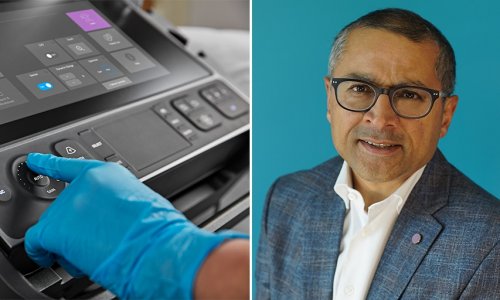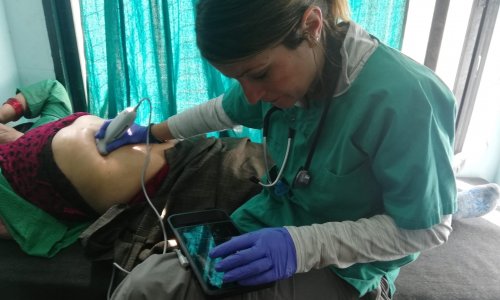compact & life saving
Point-of-care ultrasound helps enhance medical care in Africa
In Western society, access to high quality medical treatment is frequently taken for granted. Elsewhere, the reality is that many less developed countries struggle to provide healthcare services. Zanzibar has taken a unique approach to resolving this issue, working closely with the charity Health Improvement Project Zanzibar (HIPZ) to improve its hospital services. Dr Ru MacDonagh, founder of HIPZ and a consultant urologist at Musgrove Park Hospital in Taunton, Somerset, explains how Zanzibari patients are benefitting from this, and how point-of-care ultrasound plays a pivotal role.


My involvement with African healthcare began some 20 years ago when I was a urological trainee in Tanzania. During my time there I became friendly with a Zanzibari urologist, Dr Mohamed Jiddawi. Over the next 10 to 15 years, I visited Zanzibar on many occasions to work with him before setting up my own charity, Health Improvement Project Zanzibar, in 2006. At that time, Dr Jiddawi was Principal Secretary to the Minister of Health in Zanzibar, and he took the rather unusual step of asking us to take over running the smallest of Zanzibar’s three hospitals, Makunduchi Hospital in the south of the island, on a 10-year lease. The idea was that volunteer doctors and healthcare workers from the UK would train and supervise the Zanzibari staff, helping them to adopt good clinical practice and enhance their skills. At the same time, HIPZ would work to improve the hospital’s infrastructure and services in preparation for its return to government control at the end of the agreement. Patient outcomes improved so dramatically that, in 2012, we were asked to run the larger Kivunge Hospital in the north as well.
Life expectancy in Zanzibar is just 49 years, and there is particular concern about maternal and child health. With half of all births taking place at home without a skilled birth attendant present, one maternal death in every 180 births, and one in seven children dying before the age of seven – the majority of them under two years old – improving maternity services was clearly a priority. One big problem was the lack of ultrasonography, which is vital in a maternity unit; you simply cannot run the unit without it. When we first introduced ultrasound, we relied on UK hospitals donating large cart systems that they no longer needed. However, these systems were not really practical for use in Africa. They were invariably too complicated and had a tendency to break down. With no repair contract, the system could be out of use for several months, leaving the hospital with trained staff but no working ultrasound equipment, and so we looked for an alternative solution.
I already knew of SonoSite, as the company’s point-of-care ultrasound systems are used by my anaesthetist colleagues at Musgrove Park. One of the anaesthetists had also used SonoSite systems in the earthquake zone in Nepal during the 2015 disaster relief effort, and described them as ‘bullet proof’. This robustness makes them ideal for use in Africa, and so we bought two NanoMaxx® systems for our hospitals in Zanzibar, which are used all the time. They are compact and lightweight, making them easily portable, and the image quality is great. The systems are also quite simple and straightforward to operate – I learned how to use them in a very short period of time – and deliver exactly what we need.
Ultrasound has made a tremendous difference to our hospitals. We use it for all obstetric indications, including antenatal procedures such as dating and fetal anomaly scanning, and during labour. One of the biggest challenges has been to persuade pregnant women of the benefits of attending hospital for antenatal care and delivery. We use incentives such as a free hospital pick-up service and gifts of baby clothes to encourage them to come, and also promote our services through the radio and videos in primary healthcare centres. Now we are finding that women who have had an ultrasound scan realise what can be achieved and their trust in the hospital grows. They really appreciate seeing the baby, and usually continue to attend for further antenatal care, spreading news of the clinic by word of mouth. It’s been a huge success and, where we used to have attendance rates of 20 to 30 % at our antenatal clinics, this has now grown to around 70 %.
But it’s not just maternity services that benefit from point-of-care ultrasound. We also use the systems for basic surgical indications such as acute abdomen – for example appendicitis – as well as the detection of hydronephrosis, kidney and bladder stones, ectopic pregnancies and regional anaesthesia. As time goes on, we may well broaden our ultrasound applications further still. Point-of-care ultrasound has made a dramatic difference at our hospitals, ensuring the continuity of our services; it’s a real life saver.
Source: University of Gothenburg
01.01.2017











